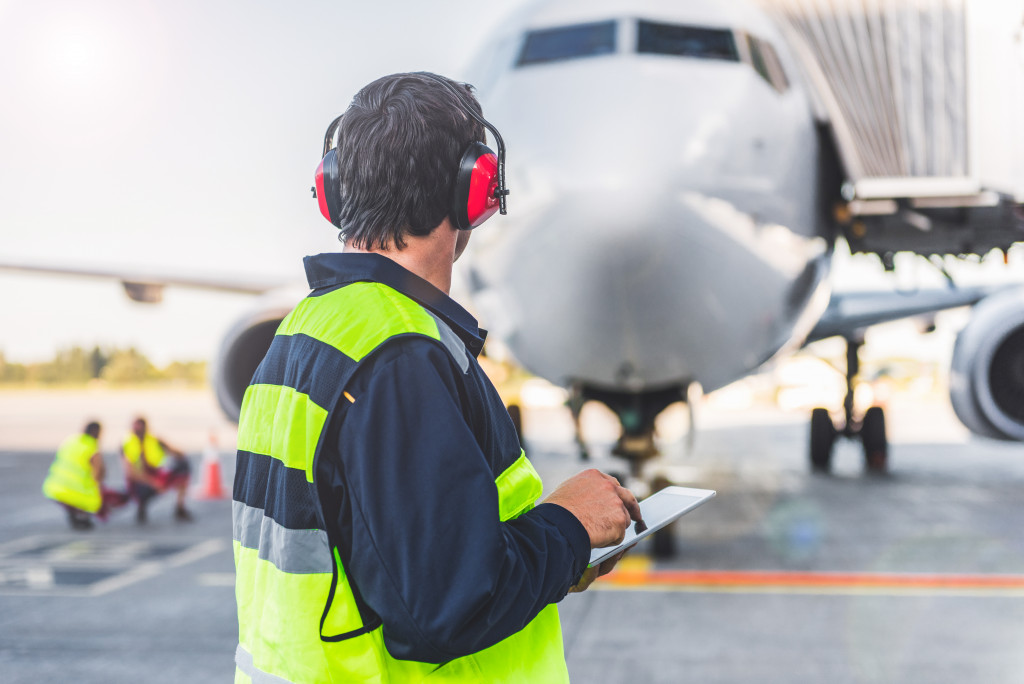• Airworthiness Directives (ADs) are instructions issued by the FAA when an aircraft or its equipment needs to be addressed before takeoff.
• Maintenance records must be kept to ensure components of an airplane have been serviced and remain in good condition.
• Pilots conduct preflight checklists to confirm all systems are working correctly and all components are functioning optimally.
• Load calculations ensure the weight of passengers and cargo doesn’t exceed the maximum allowable weight for an airplane’s specifications.
• Weather monitoring systems provide real-time data on environmental conditions, helping pilots determine if flying is safe enough.
As a business leader, you know how important it is to be prepared. Preparing your aircraft for takeoff is no different. To maximize safety and efficiency, there are technologies that should always be used to ensure an aircraft is ready for takeoff. Keep reading to learn more about the essential technologies that ensure all aircraft are in tip-top shape before launch.
Airworthiness Directives (AD)
An AD is an instruction issued by the FAA when there is a known issue with an aircraft or its equipment that must be addressed before the plane can take off. The AD outlines what needs to be done to bring the plane back into compliance with safety regulations, as well as any additional steps necessary to ensure the safe operation of the airplane.
Maintenance Records

All airplanes must keep detailed maintenance records so pilots and air traffic controllers can see when certain components were last serviced. This information helps them determine when parts may need to be replaced or repaired for the aircraft to stay safe and reliable during flight. Pilots will also use these records to determine whether any specific parts need extra attention before takeoff and/or landing based on their age and condition.
Preflight Checklists
Pilots always perform preflight checklists before each flight to confirm that all systems work correctly and all components function optimally before takeoff. This includes verifying fuel levels, checking oil levels, inspecting tires, etc. This helps pilots ensure that their planes are ready for takeoff and can handle whatever conditions they might face during the flight.
Load Calculations
Before a pilot takes off with passengers or cargo on board, load calculations must be performed in order to make sure that the weight of both passengers and cargo does not exceed the maximum allowable weight for the plane’s design specifications. This ensures that the aircraft has enough lift capacity for takeoff without putting undue strain on its engines or other components.
Weather Monitoring Systems
These systems provide real-time data on environmental conditions like wind speed, temperature, cloud cover, visibility, etc., which pilots use to determine if it is safe enough for their planes to take off. If conditions do not meet safety standards, they will delay flights until conditions improve or find alternate routes if necessary.
Ground Support Equipment (GSE)

GSE is a crucial technology that ensures aircraft are ready for takeoff. GSE consists of tools and equipment used to service airplanes before and after each flight, including the following:
Portable hydraulic power unit
You need to invest in a portable hydraulic power unit to power tools and equipment used to service aircraft. This is essential for various maintenance tasks, such as changing tires or brakes, checking fuel levels, or even manipulating control surfaces on the plane’s wings.
Aircraft alignment instrument
This instrument checks the alignment of an aircraft’s landing gear before takeoff. This ensures that the plane is level and there are no discrepancies in the gear’s position. This helps minimize drag during flight, leading to improved performance and fuel efficiency.
Baggage tugs
These tugs are used to move cargo from a truck or other vehicle onto an aircraft. This helps ensure that cargo is loaded quickly and efficiently, allowing the plane to take off on time.
Aircraft jacks
These are used to lift an aircraft off the ground in order to perform maintenance or simply give it a good inspection. Aircraft jacks come in various sizes and are designed for specific types of airplanes. They help ensure that an aircraft is ready for takeoff.
By having the proper ground support equipment on hand, you can be sure that your aircraft is ready for takeoff. Investing in high-quality GSEs and keeping them well-maintained is also essential, as this can help minimize downtime and ensure the safety of both passengers and pilots.
Airworthiness directives, detailed maintenance records, preflight checklists, load calculations, weather monitoring systems, and GSE are just a few of the necessary components that must be checked off in order to ensure an airplane is ready for flight.
Investing in high-quality GSEs and keeping them well-maintained can help minimize downtime while ensuring safety standards are met. Following these steps will give your passengers peace of mind knowing they can trust their plane is prepared for takeoff each time they board!




